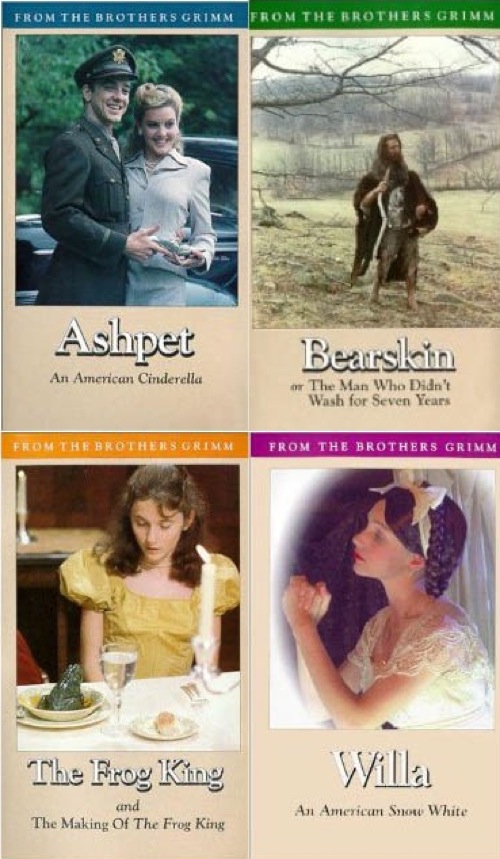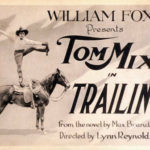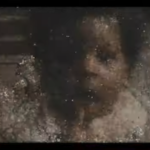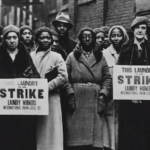Fairy Tales of the Silver Screen
 Jack Zipes has spent decades analyzing the way the stories work, and their most effective film versions.
Jack Zipes has spent decades analyzing the way the stories work, and their most effective film versions.
Little research has been done on fairy-tale films; but of what there is, Jack Zipes has been responsible for a large part. Among the handful of books that have appeared on the subject is his The Enchanted Screen: The Unknown History of Fairy-Tale Films, which Routledge published in December 2010.
He told MIAN how he went about preparing that impressive volume, and shared his thoughts (see, below) on what makes for compelling film versions of tales that viewers often know long before they see them on screen.
Zipes, a retired professor of German at the University of Minnesota, former director of the Center for German and European Studies there, renowned translator and scholar of children’s literature and culture, and active storyteller in public schools and children’s theaters, argues that fairy tales were central to the birth of cinema, offering cheap, copyright-free material that could easily engage audiences though familiarity and special effects.
He relates that Georges Méliès invented the medium, before Disney monopolized it, and he analyzes why the Disney approach came to dominate, and at what cost.
He inspects English and non-English films, animation, live-action, puppetry, woodcuts, montage, cartoons, and digital imagery, illustrating his work with many film stills and an extensive filmography and bibliography.
Zipes is far from new to fairy tales. In such books as his acclaimed The Great Fairy Tale Tradition: From Straparola and Basile to the Brothers Grimm (Norton, 2002), he has detailed the history, themes, and achievements of the form.
He began writing about film in his first major book, Breaking the Magic Spell: Radical Theories of Folk and Fairy Tales in 1978. He continued to write on fairy-tale films in such books as Fairy Tale as Myth/Myth as Fairy Tale (University of Kentucky Press, 1994) and Happily Ever After: Fairy Tales, Children, and the Culture Industry (Routledge, 1997).
He began teaching courses on the fairy-tale film throughout the 1990s and has continued since then at the University of Minnesota. And he saw problems in the way the genre was studied.
He says:
Most of the research on fairy-tale films in the 1990s and beginning of the 21st century was focused on the Disney animated films, and I realized that this focus skewed the actual history of this genre, especially because I was familiar with George Meliès’s works and many other experimental filmmakers of the 1930s and 1940s. As I taught my courses in the 1990s, I began collecting videotapes and DVDs with the intention of writing a short book on the fairy-tale film.
However, I had many different projects to complete – two of which took me to Italy – and I did not have the time to devote myself to the fairy-tale film book.
By the beginning of the 21st century, I was overwhelmed by the mass production of DVDs that allowed me to view fairy-tale films from Eastern Europe and Asia. I am fluent in German, French, and Italian, and I can also understand films in Spanish. So, I increased my collecting of films by acquiring videotapes and DVDs from all parts of Europe and Asia. (Right now I have approximately 1,000 fairy-tale films – videotapes, DVDs, and recordings from the Internet.)
Given the great access to films and several new publications in German, French, and English at the beginning of the 21st century, I decided to begin serious work on a large fairy-tale film book about 2004, when I completed my Italian folklore projects. By this time, I had an excellent filmography and bibliography. I also began a phased retirement from the University of Minnesota that enabled me to work on my fairy-tale film book nine straight months without dealing with the inane bureaucracy of the university.
I visited and worked at the British Film Institute and the French Cinémathèque. I bought tons of DVDs in Germany that were actually Russian, Czech, and Polish fairy-tale films. Friends and colleagues, who knew about my research, gave me tips or sent me burned DVDs. I downloaded numerous short fairy-tale films from YouTube and other Internet sites. I read widely, even though the research on fairy-tale films is still in its early stages.
I mention three or four books in French, German, and English in my preface. Since I am not a so-called film studies scholar, my approach to the fairy-tale film is somewhat different from that of a specialist in the cinema. That is, I have educated myself in film studies by reading books on animation, adaptation, film theory, etc. But what interests me most is how the genre (oral/literary) of the fairy tale has been developed by filmmakers in highly innovative ways so that most people (children and adults) are now exposed to the fairy tale discourses through film first rather than through oral and literary traditions.
I am a storyteller in public schools and a pack rat who searches flea markets, used-book stores, and video stores. I have made some major discoveries of fairy-tale films that I think need to be discussed and shown.
One of the greatest discoveries was Jannik Hastrup’s animated film, The Long Shadow (1998), a brilliant depiction of Hans Christian Andersen’s life. I found a French DVD in a used video store in Minneapolis. To my knowledge, this film has never been dubbed in English or even shown in English. (Hastrup has also made some other unusual fairy-tale films.)
And, of course, most of the Eastern European fairy-tale films have not been shown in the West. So, as a researcher, I have also felt that I have been somewhat of a pioneer, helped by many wonderful friends and strangers. Despite all my efforts to be comprehensive, there are still many fairy-tale films that I could not discuss and missed.
I hope to rectify the situation with a second book.
As Zipes has said in his books and other writing, and in previous interviews, accomplished fairy tales, like expansive fiction of many varieties, present what he has called “the human struggle to form and maintain a civilizing process” as it is challenged by moral and social conflicts and deep-seated, often base instincts, and as it adapts and innovates to achieve humane social relations.
As essentially moral fiction, he suggests, they may unsettle readers with their shortcomings but also inform them of their capabilities. “Fairy tales hint of happiness,” with what the philosopher Ernst Bloch called “anticipatory illumination” and “utopian appeal,” he said in one interview.
The more fairy tales use fantastic events and aesthetic structures to illuminate ways that humans, all misfits, may fit together, the more effective they are as fairy tales, he suggests.
Of course, psychology is at the root of the fairy tale, and often it is deployed in striking, even shocking ways. In Zipes’s analysis, Freud is never far away, so akin are such of his theories as the “uncanny” and ego disturbance to the operations of fairy tales.
Zipes has argued “that the very act of reading a fairy tale is an uncanny experience in that it separates the reader from the restrictions of reality from the onset and makes the repressed unfamiliar familiar once again.”
Zipes considers, in fact, the thought of a wide range of theorists who have found fairy tales compelling. He draws, too, on his expertise in the critical theory of the Frankfurt School, folklore and fairy tales, romanticism, theater, and contemporary German literature, in particular German-Jewish work, as well as on his reading in such subjects as social Darwinism, evolutionary psychology, and bio-poetics.
He notes, for example, that Bruno Bettelheim believed that fairy tales estrange children from the familiar world and allow them to deal with profound ego disturbances such as anxiety-provoking incidents to achieve autonomy. (Does that theory contradict itself? If a child is disturbed, what is the “real world” other than one that is already disturbed?)
The future of fairy tales seems assured, Zipes suggests, because human evil, dreams, and fantasy will stalk ever abroad.
In a 2002 interview, Zipes admitted that “like many people, I find our reality so disturbing, so unfulfilling, so corrupt, and so barbaric that I began conceiving alternatives to our social condition.” Good fantasy literature, such as the best fairy tales, provide a source of hope for that something better. And so, he said, “I may even be obsessed by them.”
He undertook to study the ways in which they operated – their structures, symbolism, operations, and such aspects of them as the way they “reflect the conditions, ideas, tastes, and values of the societies in which they were created.”
He admits to an abhorrence for the perverse, antiseptic sweetness of the likes of Care Bears and “the inane Barney,” gravitating instead to more complex, challenging adaptations of older stories, both those that remain within the fairy-tale type, and those that merge it with fantasy and other genres, not necessarily with admirable outcomes.
Zipes also admits to trying his own hand in writing fairy tales – he published some in his book, Creative Storytelling – as well as other fiction, under a pseudonym. And he has translated many German, French, and Italian fairy-tale authors preoccupied, like fairy-tale tellers since at least early medieval times, by rituals, customs, miracles, fantasies, beliefs, and delusions.
Jack Zipes spoke to MIAN about his research on December 29, 2010
MIAN: Had you long been contemplating writing about fairy-tale films?
Zipes: Yeah, I’ve always been, ever since my childhood, a great moviegoer, and it seems almost natural that one day I would actually write about film. But it wasn’t really on the agenda until the late 1980s or the beginning of the 1990s when I first came here [to the University of Minneapolis] and began teaching various courses on film. I’m within a German department, but also because I’m a comparativist – I got my PhD in comparative literature at Columbia – and they gave me free range. I’ve always taught outside of my department.
MIAN: The history of fairy tale on film is a vast history with lots of different national histories. What’s your sense of the geography of fairy-tale film?
Zipes: Yes, it’s absolutely stunning to see how widespread the fairy-tale film is in different countries. For example, Czechoslovakia, Poland, the Soviet Union – Russia – have very different and independent fairy-tale film traditions both in animation and in live action. Also East Germany. All four countries have fairy-tale film traditions that rival America.
It’s just amazing, since 1989, what has become available.
And I really haven’t touched on India or China, yet. I’m hoping to do that in the future with other people, people who are more expert than I am. But Japan and South Korea have very lively fairy-tale traditions. Japan has an amazing, not just anime tradition, but before that. There was a director who is really superb who came before [Hayao] Miyazaki, Taiji Yabushita, who made a superb film, Panda and the Magic Serpent (Hakuja den), in 1958.
Fortunately it’s available in English, now.
http://www.youtube.com/watch?v=TJ-RBQ0dgos&feature=related
I found films also in New Zealand that were interesting experiments in fairy-tale filmmaking.
So, it definitely is a widespread tradition; different countries draw quite often on the classical Western European tradition, but there also films that are based on very local folk tales and fairy-tale traditions.
MIAN: Clearly those are traditions that are little known in the West, although the Japanese tradition is making its mark in the United States, at least. But when I think about fairy tales, I don’t first think about the United States, but is that where the majority of fairy-tale films have been made?
Zipes: Yes, I think so. Both animated and live action. And for the most part, unfortunately, I would consider the majority of the films trash.
But there are some remarkable ones. Jim Henson did a series for television of remarkable fairy-tale adaptations with John Hurt as his storyteller. Those films are probably among the best in the world. [The Storyteller, 1988]
http://www.youtube.com/watch?v=_wSMxltXkW0
And you have people like Tim Burton who does experimental types of fairy-tale films. And even Tom Davenport did a series. He had grants from the National Endowment for the Humanities in the 1980s, and then they ran out in the 1990s. He directed films for schools, for young audiences.
They are on DVD now. They are absolutely stunning, some of them – they’re very uneven productions. He did about 15.
So there are some excellent experimental and non-Hollywood filmmakers who have produced fairy-tale films. But the run-of-the-mill fairy-tale films, they also come out of the United States, total kitsch and very sentimental.
MIAN: Is that where the money is?
Zipes: Oh, definitely, today. They are still making all types of banal films for television, for the DVD market. Disney fortunately has made its last fairy-tale film, Tangled; it has just come out, based on Rapunzel. And it’s a run-of-the-mill Disney film, but there’s not too much singing in it, this time. It lacks Disney’s traditional humorous side. Fortunately they’ve announced that they’re not going to make fairy-tale films, any more, although seeing is believing. They said Tangled is their last one.
I think that is because the competition, qualitatively, is much better. The recent film, How to Train Your Dragon, http://www.howtotrainyourdragon.com/ is quite good, it’s remarkable. I managed to deal with it in the last chapter of my book, before it went to bed.
There are other films, like Shrek, although the Shrek series also is becoming quite banal, but the first Shrek was a highly unusual critique of the whole Disney monopolization of the fairy-tale film.
But in Europe, the filmmaker Michel Ocelot, in France, has produced three major animated films that are highly unusual and many other filmmakers have broken from the mold.
http://www.youtube.com/watch?v=ssSbwFI68rI
Unfortunately some of the best are just not available in the West. You have scour all over for some of these amazing films.
Most of them are in Europe – the best animation and live action is now being made there.
MIAN: What are some of your favorites?
Zipes: I would say Jan Svankmajer’s films are just mind-blowing. Little Otik (2000, original title Otesánek, released in US as Greedy Guts), for example, or his adaptation of Alice are in-depth, profound explorations of fairy-tale tradition. Little Otik is based on a Czech folk tale from the 19th century. It’s just absolutely brilliant. It’s about a childless couple who desperately want to have a child and they go into the woods and find a hunk of wood that looks like a child and they bring it home and begin to nurse it. And then it comes alive, and eventually it devours everybody in a tenement house, including the log’s parents. Svankmajer uses this film to talk about consumerism in the Czech Republic, today.
He’s definitely one of my favorites.
There’s also a contemporary Russian animator, named Garri Bardin, and he did an amazing short film called The Grey Wolf and Little Red Riding Hood [Seryy Volk end Krasnaya Shapochka]. It came out in 1990, right after the fall of the wall in Germany. It’s a portrayal of a wolf who has lost his teeth because they were taken away from him; like an old communist, they take away his bite after things changed in 1989, but he manages to get it back by going to a dentist and threatening him. He gets false teeth, very sharp teeth, and goes about eating whoever he can to get revenge, but he can’t get Little Red Riding Hood. It’s again a political analysis of the contemporary situation. He also did Puss in Boots, about this same time, that is also splendid.
I mentioned Jannik Hastrup. He did in 1998 this amazing film, H.C. Andersen’s The Long Shadow; it’s a fairy-tale film but based on Andersen’s life. Simply the animation is unusual, the colors, the contours, everything, and the interpretation of Andersen is one of the best, it’s probably better than most biographies written about Andersen.
And then there’s a Finnish woman, Päivi Hartzell who did The Snow Queen [one of several tellings of a Hans Christian Andersen story] in 1986. She’s done some other fairy-tale films and she’s quite good, very unusual filmmaker. I like her.
And then I discovered another Russian filmmaker, Alexander Bubnov who did a film called Blue Beard’s Last Wife which ends up with Blue Beard marrying a woman who is somewhat like a Greek goddess and has snakes that paralyze Blue Beard and Cupid intervenes to get both of them to fall in love with one another but when he goes to make love to her it turns out that the snakes are down there, as his penis. It doesn’t seem humorous, the way I’m describing it, the way I’m describing it, but it is. It’s a very unusual film.
And then the Czechs have an amazing tradition that goes back to the filmmakers Jiri Trnka
http://www.youtube.com/watch?v=uwofSxBiNfc&feature=related
and Karel Zeman
http://www.youtube.com/watch?v=7ELdvDOBhNU
They were filmmakers in the 1930s, 40s and then the 50s and 60s.
But the latest, youngest one is Jiri Barta, and he did Krysař(The Pied Piper of Hamelin) in 1985 with wood-carved figures and a small town and it’s a whole critique of the materialism in this town but of course parallels can be drawn to Czechoslovakia. It is just one of the most exciting, innovative, unusual, bizarre, and dark adaptations of the Pied Piper of Hamelin.
http://www.youtube.com/watch?v=ikGhByb5UFs
And then probably the other filmmaker I’m very interested in is Yim Pil-Sung, who did Hansel and Gretel, South Korean, in 2007. He did probably the best adaptation of Hansel and Gretel I’ve ever seen in my life. It’s been featured at various festivals in the United States. It’s just absolutely splendid.
So the fairy tale film is alive and well, is what I would say. And it’s not dead in the United States, by any means. There are very, very good animators and directors, among them Tim Burton, who have done excellent work.
MIAN: It seems that in some degree you emphasize the topical or community-oriented nature of fairy tales, but there’s also a sense of subversion – a contribution to communality through subversion, would you say?
Zipes: Yes, that is certainly my ideological, empathetic approach. But I guess my empathy is with filmmakers who take stories seriously, who really want to explore it, and it generally ends up somewhat subversive because fairy tales have always been subversive, both in their oral and literary form. The very best of them have tried to critique the sociopolitical conditions in their countries. So I have almost a natural disposition to interpret and also criticize their approach.
And I’m concerned about the way film as an art form has been commercialized, so that a lot of filmmakers just don’t take the stories seriously because these fairy tales are well-known, they know it should sell, even if they do a poor film, and they’ll find a market for it, and so on.
I’m really interested in filmmakers who have something to say about the stories, and about film, and about our life. That’s why I tend in my book to champion great stories like that, like Guillermo del Toro’s Pan’s Labyrinth. That’s a film that really appeals to me a great deal.
In the last chapter of my book there are five or six films that I say are the most interesting films in the last 10 or 15 years, that take the fairy tale in both the cinematic and narrative way and open it up to further experimentation and allow us to look at the tales in a new light. Those are the filmmakers I tend to prefer.
MIAN: It’s interesting to think about the intersection of the political and the psychological. Clearly the psychological element of the great fairy tales is very strong and has a certain subversive gesture to it, as well, but it’s somewhat set apart from the political, wouldn’t you say?
Zipes: Yes, I totally agree. One of the films I talk about, for example, in the final chapter, is Mermaid. Anna Melikyan’s film, that she did in Russia. It’s a take-off on Andersen’s fairy tale, “The Little Mermaid,” but it takes off on it to critique what’s been going on in Russia in the last 10 or 15 years, in a really brilliant way. A young woman dies in the film, nevertheless there’s a utopian element in the film that doesn’t lead us into despair but certainly leaves us with a feeling that we wish things could change.
There’s also in there another wonderful film, The Fall, made by Tarsem Singh. The films in the last chapter all have young protagonists, sometimes eight or nine years old, girls, who voice – even like in del Toro’s Pan’s Labyrinth. It seems like the better filmmakers have chosen in the last 5 or 10 years have allowed a young
protagonist to voice a critique of the way society is going.
That’s in different parts of the world. Del Toro sets it in Spain, although he’s Mexican. Melikyan in Russia. But all of these films represent my ideal of what I think filmmakers should try to be doing within experimentation of both the narrative of the fairy-tale film and reflecting upon conditions in their own times.
MIAN: Are you talking about films for adults rather than kids?
Zipes: In my book I don’t even make that distinction. I have, in some essays I’ve written, at times. I’ve come to the conclusion that even though certainly films made for family or children, generally adults go to them and love them and appreciate them, on some level. Certainly all the Shrek films are geared that way, the Disney films. But it’s true that in the films I discuss in the final chapter, they’re definitely not for children, and yet I would say they should see these films as soon as they can appreciate them on some level, because in some ways they really speak to children. By children I mean young adults, and they should be seeing films like this. They’re intelligent, 10 or 11 or 12 year olds. There’s no reason why we should pamper them. They watch so much violence and play these violent video games, so why shouldn’t they see films that take violence seriously, and critique it, whereas these video games and cartoons and so forth basically spur them on to become more violent.
I really don’t like to make that distinction, and I don’t think I make it anywhere in the book, except when I say that a film is a schlock fairy-tale film for kids.
MIAN: Why is it the case, as you point out, that research on fairy-tale films is still in its early stages, while there does seem to be plenty of writing on the fairy tale in general.
Zipes: It’s strange, I really can’t give you a good answer, except to say – and this is no criticism of people in film studies – but as I mention in the preface to my book, the leading figures in film studies in America, none of them have written about the fairy-tale film, ever, nor in the encyclopedias or companions is there a rubric for fairy-tale films. It’s stunning.
You’ll get essays on Meliès, of course, or you’ll get essays on Tim Burton, or Miyasaki, or people like that, but in terms of the fairy-tale film as a sub-genre in film studies, there are now four or five books, two in German, one in French, and two in English, and that’s about it.
I’m hoping that maybe my book will spark some other writers, particularly people who are more expert in film than I am, to begin studying the fairy-tale film.
MIAN: In terms of archives, it seems you had to employ a catch-as-catch-can approach, rather than go to particular archives. Is that because people haven’t concentrated in on the genre yet?
Zipes: That’s right. They haven’t realized how significant the genre has been, beginning with Meliès. There were 100 to 200 or 300 silent fairy-tale films that have never been studied. I managed to see maybe 20 or 30 of them because you have travel the world to find them, but again I’m hoping that maybe this will spark some young scholars to begin looking… I think the silent-film period is really crucial. Literally in my filmography I must have at least 100 titles of fairy-tale films and that’s really not exhaustive.
There’s a Norwegian filmmaker by the name of Ivo Caprino who made fairy tale films from 1948 to 1970; they’re really excellent animated films, based on [Peter Christen] Asbjornsen’s Norwegian Folktales [1841].
There are many films I’m discovering since the book was completed. I’m speaking to some publishers about doing a complementary edition to the book I just did with essays written by other people, with my editing them – getting experts from India, or China, or Japan, and so on. I’m hoping to do that.
I’ve met a lot of people through this book who are writing about fairy-tale film and whom I’ll hope to get to write for me.
MIAN: Is the written or oral fairy tale the same think as the filmed fairy tale? Are they the same beast in a different skin?
Zipes: They’re not the same beast because film can do so much more and will continue to do even more through the Internet and whatever technologies are developed in the future. The advantage of film is its ability to make these stories come alive and to make use of special effects to change the perspective, experiment, recreate, to develop new stories, and so on. What fascinates me, of course, is the whole historical tradition of tales that were developed as oral tales in different societies throughout the world and how they spread by word of mouth and how they were significant in terms of rituals, and explanations of how the world was created, and initiations and warning tales, and so on.
It’s very difficult to define the fairy tale but there are certain recognizable traits and recognizable plots and patterns that have evolved and that are more prominent than other patterns. It’s fairly easy for anyone trained in, let’s say, the field of folklore or fairy tales, to talk about a tale type as being part of the fairy-tale tradition. I can only say that the film has enriched this tradition. After the oral/literary, which still exists, we had the radio, we had illustrations, paintings and so on, and the culmination of course is film.
MIAN: You’ve written so much about the written and oral fairy tale. Is there some element of that mode that is lost? It’s the argument often had about film adaptations of literary works – there’s clearly a different medium and you may gain something and lose something.
Zipes: Exactly. In the oral tradition, a person is telling a tale right in your face, right next to you, and you can intervene, you can challenge. There’s a presence. I work as a storyteller in schools, and it’s amazing to see – the children are really dying for this personal connection with the storyteller. The immediacy, the contact they have, they don’t get it any more. They live in an alienated world of computers and TVs. So definitely one thing that has been lost is that immediacy, that spontaneity, and the ability to use the imagination as the storyteller is telling the tale, not having images thrust upon you the way that film does.
Reading is the same way, of course. You go off and read the book, or it’s read to you by somebody, if you’re a child, and now you can imagine what Beauty looked like in Beauty and the Beast, but of course ever since Disney or since Cocteau, you can’t imagine what Beauty looks like because you’re seen the images. And you’ve seen the images of the Beast. You can’t even imagine the Beast, any more.
So there is something lost and maybe something gained, because if you have a great filmmaker or artist who has an imagination that is amazing, that portrayal can be so stunning that it replaces what you imagined but also is more suggestive, in some ways.
There’s definitely a gain and a loss.
MIAN: Every generation of kids can conjure up a new beast. Each child lives in its own small world – if parents are telling their kids, the beast will come, then they don’t necessarily think of a depiction in a film. There’s a concept that speaks to the protean, Freudian nature of fairy tales. The Beast must exist in our brain stem.
Zipes: Right, it is amazing how despite the fact that these images have been impressed upon us we still manage to come up with our own images of what beasts look like.
More? There’s more.
And, since MIAN spoke with Jack Zipes, he has remained busy in quest of more fairy-tale films of note, and writes:
I have found numerous films since we talked. In addition, there are several new films: Garri Bardin has produced a brilliant Ugly Duckling, Dominique Monferey has created a wonderful French animated fairy-tale film, Eleanor’s Secret, and Jiri Barta has designed an unusual fairy-tale film, In the Attic.
– Peter Monaghan
Previous Post: Searching for Experimental Japanese Film






